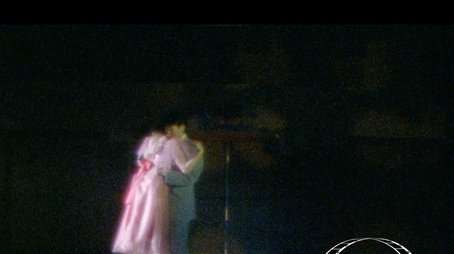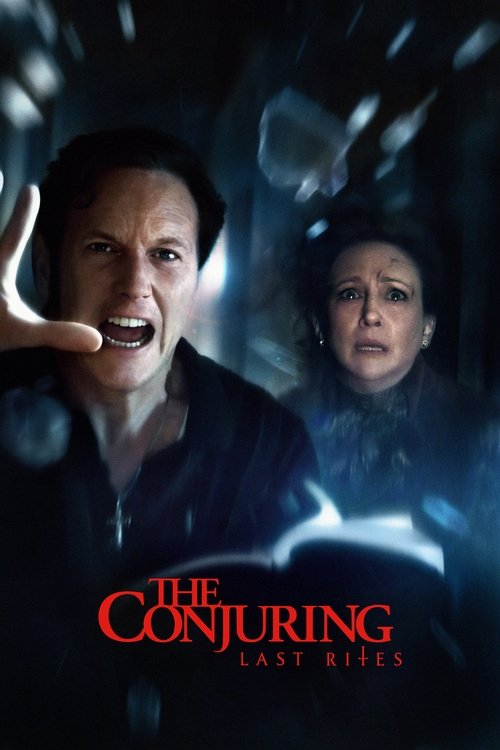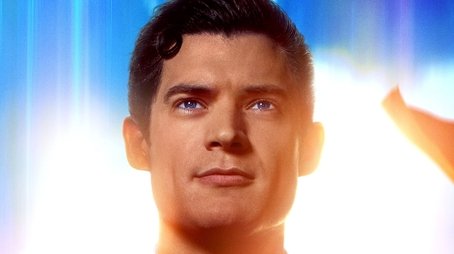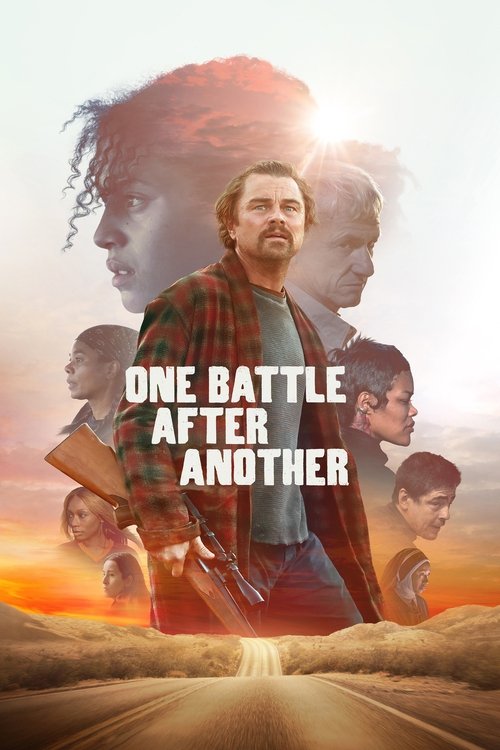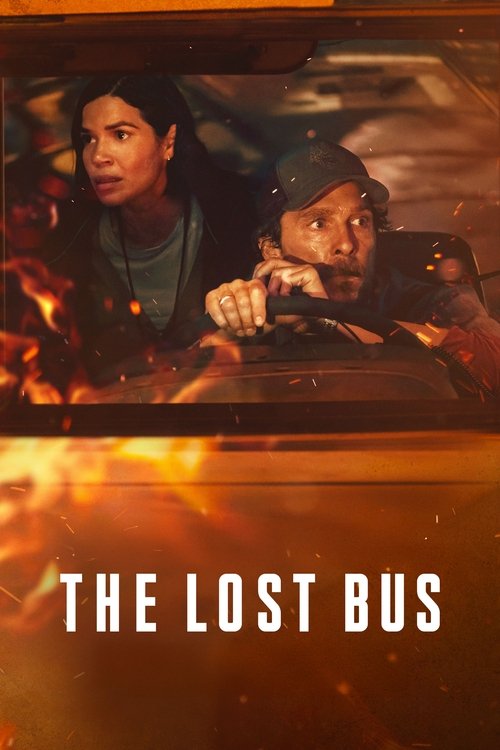
Ask Your Own Question
What is the plot?
A Night to Remember opens with a wire service bulletin about Nicholas "Nickie" Ferrante, a notorious playboy who is currently crossing the Atlantic from Europe to New York on a transatlantic liner; he is engaged to the very wealthy Lois Clark and intends to marry her once he returns to America. On board he encounters Theresa "Terry" McKay, a young woman engaged to financier Ken Bradley, who is waiting for her return in New York. Terry has abandoned a budding career as a nightclub singer to prepare herself for life as an "educated" housewife at Ken's insistence. Nickie greets passengers with the easy charm of a socialite and the press follows him; Terry greets the voyage with restraint. They exchange polite conversation that quickly sharpens into a private rapport, but Terry rebuffs Nickie's more overt flirtations because she remains promised to Ken.
The liner calls at a European port before the final Atlantic run and Terry agrees to visit Nickie's elderly grandmother, Janou. At Janou's modest apartment, Terry observes a gentler side of Nickie: he shows her sketches and a few canvases, reveals how he paints in private and confesses a concern for others beneath his polished manner. Janou takes an immediate liking to Terry; she praises Terry's influence on Nickie and promises to someday give her a treasured Ferrante family shawl. Janou and Terry take up a song together in the parlor; their duet moves Nickie visibly. That night, back on board, Nickie and Terry stand on the promenade and, after a brief conversation about their constraints and engagements, they kiss. They do not press further during the crossing.
As the liner steams toward New York, Nickie and Terry sit together on deck and discuss practicalities: both face social and financial entanglements that would make immediate independence impossible. They agree on a test of their feelings. Each will spend the next six months separating from their fiancés and working to support themselves; if, in six months, they still feel the same for one another, they will meet at the top of the Empire State Building and marry that day. They shake hands on the appointment and part with a promise rather than a plan.
After discharging from the ship in New York, Nickie and Lois and Terry and Ken separate on amicable but determined terms; Nickie accepts commission work painting large outdoor billboards and practical advertising, while Terry re-enters the world of performance, taking voice lessons and small engagements to rebuild a singing career she set aside. Terry also spends private hours trying to improve her painting, practicing in borrowed studios to prepare for self-support as an artist. Ken becomes a steady friend and financial adviser rather than a fiancé. Their six months proceed with steady progress: Nickie's commissions multiply and his painting grows more expressive as he channels private grief into color and line; Terry gathers a modest roster of engagements and teaches a children's choir to supplement income. Their mutual attraction remains constant; on the appointed day they each travel toward Manhattan to the Empire State Building rendezvous.
On a grim April night in 1912 the ocean crossing of another liner begins its fatal sequence. The RMS Titanic, the largest ship afloat and widely proclaimed unsinkable, leaves Southampton on her maiden voyage to New York on 10 April. Passengers settle into cabins and promenade, including first-class couples Sir Richard and Lady Richard and the Clarkes, a newlywed second-class pair; steerage men Pat Murphy, Martin Gallagher and James Farrel prepare for a night of dance with other immigrant passengers, and the ship's orchestra, led by Wallace Hartley, keeps a steady program of light music for salons and parties. Men in the wireless room, Jack Phillips and Harold Bride, juggle bundles of messages as they change shifts.
Over the next days, wireless stations aboard other steamers transmit reported fields of floating ice. The SS Californian sights ice on its bow one evening and uses its wireless to send a warning toward Titanic; on Titanic, Phillips receives radio traffic but cuts in and out as he struggles with a backlog of passenger messages awaiting transmission. First Officer William McMaster Murdoch takes charge of the bridge when Second Officer Charles Lightoller hands over the watch. Captain Edward Smith orders lookouts posted, sails trimmed, and the watch kept hard; the ship's course aims for New York.
On the night of 14 April, the Californian, stopped because of dense ice, fires rockets to show a nearby ship their position and density of field ice. The Californian attempts to use wireless, but its operator is off duty and its rockets go unanswered. Phillips, fatigued and irritated, truncates a warning from the Californian and fails to deliver the full caution. Titanic's bridge crew sees dark water ahead too late. Murdoch orders hard-a-starboard and full speed astern as white ice materializes in the glare of searchlights; a grinding collision shakes the hull.
Captain Smith summons Thomas Andrews, the ship's builder, from his cabin and sends him to inspect the forward hull's plating. Andrews returns with precise, grave news: the iceberg has opened a gash along almost 300 feet of hull, buckling several plates and allowing water to pour into at least five forward compartments. Andrews calculates the ship's buoyancy and tells Smith the liner cannot survive more than ninety minutes to two hours with that flooding. The officers load distress rockets and send out wireless calls for immediate aid. Phillips sends out CQD and SOS; 58 miles distant the RMS Carpathia's wireless operator picks up the distress and Captain Arthur Rostron orders a hard about and maximum speed to reach the stricken vessel, but the Carpathia cannot arrive any sooner than four hours.
As the massive ship lists, bridge and deck officers move to the lifeboat stations. Smith orders Lightoller to prepare and lower the longboats. Crewmen begin to swing davits and rig boats; the musicians move from the lounge to the boat deck and continue playing, keeping tempo and trying to steady passengers as the crew organizes evacuation. In the first-class grand staircase Robbie Lucas, in shock upon hearing Andrews' private pronouncement, runs to fetch his wife and children and sees them through into a boat. In steerage, Murphy, Gallagher and Farrel help a Polish mother and a young Polish girl up to the boat deck and shepherd them toward an available skiff. Hoyle, who had been gambling in the ship's cardrooms, leaves the poker game and insists on boarding a boat; his unease becomes action and he secures his place among the soon-departing lifeboats. Jay Yates, another gambler, writes a note for a female passenger to post to his sister before he takes a seat in a lifeboat.
Officers and crew enforce the "women and children first" drill. First- and second-class passengers, who enjoy easier access to the boat deck, begin filling boats and rowing away. In contrast, the crew struggles to control the flow of third-class passengers, many of whom encounter locked gates and corridors that impede their movement to the boat deck; when doors are later opened or overcome, third-class passengers surge forward in panic. White Star Line Chairman J. Bruce Ismay, pressed by the crowd and the logistical scramble, boards one of the last accessible lifeboats; his getting into a boat earns condemnation from several quarters on deck and fuels controversy among survivors.
As the bow continues to settle, Titanic's stern begins to rise into the air. The list makes daviting and lowering of the remaining collapsible lifeboats increasingly difficult; Lightoller and other seamen fight the slant, lashing and swinging boats into the water while waves and wind buffet the deck. The orchestra shifts from popular tunes to a hymn as the mood darkens; they play "Nearer, My God, to Thee" while passengers cling to railings and rafters. Captain Smith remains in command on the bridge; as the situation worsens he orders, through a megaphone, the final command: "Abandon ship! Every man for himself!" and then returns to the bridge. He does not leave the ship.
In the third-class corridors, the crew's efforts to keep the lower decks sealed break down under the pressure of those seeking lifelines. When a mass of steerage passengers finally makes it free, chaos erupts at the boat deck: crushes, shoving, and desperate scrambling. Ida and Isidor Straus, sitting on deck together, refuse to be separated: Mrs. Straus rejects an offered seat in a lifeboat, choosing to remain with her husband. Their refusal to abandon each other becomes a public, visible decision; both remain aboard as the ship lists. On another section of deck, a rope is passed to the Clarkes, who attempt to reach safety but then are struck by a collapsing funnel; the Clarkes are killed when a forward funnel collapses and falls over decks upon them.
Thomas Andrews takes his station on the forward promenade and later moves to the first-class smoking room as events collapse around him; he sits among fine furnishings and accepts the inevitability of the ship's end, waiting in calm resignation as the sea claims the bow. Nearby, a steward kneels at the railing with a crying small boy, holding him as the deck tilts and the child shivers. As the last lifeboats are launched, one collapsible boat is wrongly swung away and later floats overturned; Robbie Lucas, who had earlier seen his family set away to safety, is left on the sinking ship and his dead body later floats past an overturned collapsible that shelters some survivors. Jay Yates, refusing to clamber into an already full lifeboat and unwilling to overcrowd a boat that might capsize, swims away into the darkness and drowns. James Farrel, who had aided the Polish passengers, vanishes amid the crush and is lost in the final plunges.
Many men on deck are swept off the sloping, breaking stern as the final structural failures throw them into the water. Charles Joughin, the ship's chief baker, walks among the boats after giving his lifeboat seat to others and drinking to steel himself; later, when the ship's stern tilts skyward he climbs into a lifeboat and endures the night in the water until rescue. Lightoller stands among the officers and the men of the boat crews and manages one of the lifeboats, taking a command role in keeping survivors afloat and distributing what warmth and clothing he can. As the ship's lights falter and the great liner's bow finally slips beneath the waves, the stern rises, cranes and boats break away, and a last set of cries vanishes into the roar. Captain Smith remains aboard and is last seen on the bridge before the wreck sinks; he goes down with the ship.
The final plunge drags the remaining decks and funnels into the Atlantic. The frozen water claims passengers in the sea: some drown in the sudden frigid shock and panic, others die of hypothermia hours later as they float in the wrong clothing and with only their breath and song for company. The band falls silent only when it must; most of its members do not survive. Many steerage passengers are trapped below decks and drown when their corridors flood, while others on deck are washed into the ocean as the hull breaks apart. Eyes on the water watch for boats and bodies; in the blackness a few clusters of persons cling to wreckage and the half-mile of floating debris.
At dawn a faint signal arrives at the waterline: the Carpathia, under Captain Rostron, speeds through heavy weather toward the coordinates sent by Titanic's wireless. Hours later, the Carpathia picks up survivors aboard lifeboats -- the exhausted and hypothermic packed into its holds and warmed in its salons. Lightoller and other officers shepherd survivors into the Carpathia's rescue procedures. On deck, survivors huddle and count names; many people, including Murphy and Gallagher, stand with the Polish girl and her mother among the rescued. Lucy and family groups mourn missing members; some recognize people they will never see again.
On the rescue ship, Colonel Archibald Gracie and Lightoller speak about assurance and certainty, with Lightoller saying he doubts he will ever again feel sure about anything after what he has witnessed. The Carpathia sends word to the authorities and reports that it has saved 705 people and that approximately 1,500 have been lost in the wreck and the water. The Carpathia receives a communication from the Californian, which had seen rockets and asked what assistance can be offered; Captain Rostron replies that everything humanly possible has been done.
Months pass. Back in the world of Nickie and Terry, the six-month test of independence continues. Nickie tries to live up to his promise to become self-sustaining; his billboard painting commissions provide steady wages and he also produces canvases for exhibitions. As he paints, his work takes on new feeling, and his best and most sincere piece becomes a portrait of Janou and Terry together. Terry, meanwhile, excels in small recitals and her conductor's work with a children's choir gives her a predictable income and social purpose. She hides a private sorrow: while trying to return to the Empire State Building rendezvous on the appointed day she is struck by an automobile. The collision throws her from the curb; hospital attendants take her to an emergency ward and surgeons work on fractures. Medical staff inform her that she has suffered catastrophic spinal injuries and that she now lacks use of her legs. She learns that medical opinion gives no promise of full recovery; doctors are uncertain whether she will ever regain the ability to walk.
Terry chooses silence. She refuses to write to Nickie, believing she cannot face him crippled and dependent after they both vowed six months of self-sufficiency. Ken Bradley visits the hospital and keeps faith as a friend; he arranges housing and provides counsel while Terry recovers physically and mentally. She refuses to let anyone know the truth of her condition, not even Nickie, and she fashions an exterior life as a choir leader for children so she can contribute to the world while she works on the impossible task of learning to walk again.
Nickie, left at the appointed meeting and seeing no one, assumes that Terry has rejected the test and has decided to marry again or to put their brief affair behind her. He feels abandoned; in his grief he flees to Europe to paint and to escape the city's reminders. While in Europe he learns that Janou, the elder who befriended Terry and encouraged Nickie, has died. Janou's death deprives Nickie of the one person who had believed in his deeper character, and he pours his sorrow into his art. He produces a canvas that captures Janou and Terry sitting together; his agent recognizes the work's power and later organizes an exhibition in New York.
Nickie's show draws attention in the city's galleries. At the same time, Terry lives quietly in New York, teaching music and keeping her secret. On the night of one concert, Nickie attends a performance with his former fiancée Lois. In the audience he glimpses Terry accompanied by Ken; they sit apart in the hall, and Ken presses her to reveal what has happened that kept her from the meeting. Terry does not speak. Nickie is unsettled but does not confront her in public that night.
At the opening of his painting exhibition a woman in a wheelchair enters Nickie's gallery and pauses before the painting of Janou and Terry. The visitor tells an assistant that she has never seen Janou and Terry together but that the portrait expresses an affection she finds deeply true; the gallery gives the woman the painting. Nickie leaves the show in a restless state; he returns to New York, drawn by an opaque mix of longing and guilt.
The next day Nickie calls on Terry. He brings the Ferrante family shawl that Janou had promised to give her and carries that small token of intent into the parlor where Terry now lives. He presses her gently with the question that has become an ache: why did she not keep their meeting at the Empire State Building; why has she not answered him? Terry continues to avoid the matter. Nickie, hurt and on the verge of leaving New York forever, speaks of the painting: he tells Terry that when he realized she would not return to him he had let his agent give the portrait to a woman in a wheelchair who stopped by the exhibit and claimed it. He recounts this as if to unburden himself.
As Nickie explains the episode, he notices something off-kilter in the room: he has not seen Terry rise from a seat since his return to New York. Alarmed, he runs into her bedroom and his attention fixes on the wall. There, propped on a small easel, hangs his own painting of Janou and Terry. The presence of the portrait in Terry's home, combined with the image of a woman in a wheelchair that he once described at the gallery, forces a sudden realization: Terry has been paralyzed since the accident on her way to the Empire State Building. In an instant Nickie understands the reason for her silence and for the six months that yielded only missed letters and absence.
Nickie reacts without delay. He returns to Terry and takes her into his arms, tears coming freely as he tells her that he still loves her and that nothing has altered his feeling. Terry, who has kept the truth because she believed herself a burden and because she wanted to prove she could stand on her own, breaks down and lets the pretense fall away. She abandons the charade of being able-bodied and, supported by Ken's quiet friendship, accepts Nickie's embrace. Nickie confesses that in his despair he had given the painting away but that he never stopped loving the woman who inspired it; Terry replies that if he can teach himself to paint and to make a life by his own hand, she will devote herself to learning to walk again.
The film closes on a final scene of intimate determination: Nickie and Terry stand together in the modest parlor, the Ferrante shawl draped over Nickie's shoulders, the painting of Janou and Terry visible on the wall. They hold hands and look forward: Terry vows that, if Nickie can learn to paint to support them, she will learn to walk someday. The camera lingers on the painting and on the couple linked in mutual promise as the scene fades to black. Meanwhile, the archival record of the earlier maritime disaster remains: the Carpathia steams past floating wreckage and carries survivors to port, with the grim tally of saved and lost recorded for authorities and for history. The last images are of survivors huddled under blankets on Carpathia's decks and of Nickie and Terry reunited at home, both sets of survivors marked by loss and commitment, both sets of journeys concluded with the small, stubborn work of reconstruction.
What is the ending?
The ending of the 2025 movie A Night To Remember depicts the final moments of the Titanic sinking, focusing on the chaos and heroism as the ship goes under. The main characters face their fates amid the disaster: some survive by boarding lifeboats or being rescued, while others perish as the ship sinks into the Atlantic.
Expanding on the ending scene by scene:
As the Titanic's bow plunges deeper into the icy water, the ship's angle steepens dramatically. Passengers and crew scramble desperately to reach the lifeboats. Second Officer Lightoller, a central character, is seen coordinating the loading of lifeboats on the starboard side, urging women and children to board first. The tension is palpable as the lifeboats fill quickly, but many remain stranded on the ship's decks.
Meanwhile, in the first-class areas, characters such as the wealthy Mr. and Mrs. Clarke and Sir Richard and Lady Richard are shown grappling with the reality of the sinking. The newlywed couple, the Clarkes, cling to each other, their hope fading as the ship's lights flicker. The band, led by Wallace Hartley, continues to play solemn music on the deck, providing a haunting soundtrack to the unfolding tragedy.
In steerage, passengers like Pat Murphy and the young Polish girl he danced with earlier are caught in the chaos of locked gates and confusion. They attempt to reach the upper decks but face obstacles, illustrating the class divisions aboard the ship. Some steerage passengers are shown making a desperate run toward the lifeboats, only to be stopped by crew enforcing the "women and children first" policy.
Captain Edward Smith is portrayed on the bridge, calm but resolute, accepting the inevitable as the ship's stern rises out of the water. He gives final orders and remains on the bridge until the very end, symbolizing his duty.
As the ship's stern lifts vertically, the remaining passengers and crew cling to the rails and rigging. The ship breaks apart, and the stern section sinks rapidly. The camera follows several main characters through these moments:
- Second Officer Lightoller survives by clinging to debris and is later rescued by the Carpathia.
- The Clarkes' fate is tragic; they are last seen together on the deck as the ship goes down.
- Pat Murphy and the Polish girl's fate is left ambiguous but implied to be grim due to their location in steerage.
- The band members, including Wallace Hartley, continue playing until they disappear beneath the waves.
- Captain Smith goes down with the ship, his final moments unshown but understood.
The film closes with the Carpathia arriving at dawn, rescuing survivors from lifeboats scattered across the ocean. The survivors are shown exhausted and grieving, highlighting the human cost of the disaster.
This detailed ending emphasizes the chaos, bravery, and tragedy of the Titanic sinking, portraying the characters' final moments with factual clarity and emotional weight.
Is there a post-credit scene?
There is no available information indicating that the movie titled A Night To Remember produced in 2025 has a post-credit scene. The search results do not mention this film or any post-credit content related to it specifically. The results mostly discuss post-credit scenes for other 2025 movies such as I Know What You Did Last Summer and Trap, but not A Night To Remember. Therefore, based on current data, it appears that A Night To Remember (2025) does not have a post-credit scene or it has not been publicly documented.
What role does Second Officer Charles Lightoller play in the film's narrative?
Second Officer Charles Lightoller is the main perspective character through whose eyes the story is told. He is portrayed as resourceful, brave, and dutiful, and his experiences and actions during the sinking are central to the film's narrative.
How are the fictional composite characters like Murphy and the Clarkes integrated into the story?
Composite characters such as Murphy, an Irishman who falls in love with a Polish girl in steerage, and the Clarkes, a newlywed couple on their honeymoon, are used to streamline the narrative. They represent multiple real-life people and help convey the diverse experiences of passengers across different classes.
What is depicted about the ship's radio operators and their handling of iceberg warnings?
The film shows radio operators Jack Phillips and Harold Bride changing shifts in the telegraph room. Phillips receives iceberg warnings but fails to properly decipher them due to a backlog of unsent messages. This contributes to the ship's failure to avoid the iceberg.
How does the film portray the interaction between passengers of different classes during the disaster?
The film depicts scenes such as steerage passengers like Pat Murphy and others enjoying a party, while first-class passengers listen to the band. Later, working-class passengers led by Ronald Allen make a desperate run for the lifeboats but are stopped in awe by the opulence of the first-class dining room, highlighting class distinctions during the crisis.
What is shown about the roles of other ships like the Californian and Carpathia in the story?
The crews of the Californian and Carpathia are featured in subplots. The Californian spots ice and attempts to warn Titanic but fails to effectively communicate the danger, which is a source of frustration in the film. The Carpathia is involved in the rescue efforts after the sinking.
Is this family friendly?
The 2025 movie titled A Night To Remember is a short film about a prom night encounter between an awkward boy and a shy girl, focusing on their memorable evening together. This film is generally family friendly, with no indications of objectionable or upsetting content for children or sensitive viewers based on available descriptions.
However, if you are referring to the well-known A Night to Remember related to the Titanic disaster (originally a 1958 British film, often re-released or referenced in 2025), that film contains intense scenes of a maritime disaster, including suspense, emotional distress, and loss of life. Such scenes might be upsetting for children or sensitive viewers due to the depiction of a tragic sinking and the associated human suffering, though it is handled with historical accuracy and emotional resonance rather than sensationalism.
To summarize:
- 2025 short film "A Night To Remember" (prom night story): Family friendly, no notable objectionable or upsetting content reported.
- Titanic disaster film "A Night to Remember" (often referenced or re-released in 2025): Contains intense disaster scenes, emotional distress, and loss of life that may be upsetting for children or sensitive viewers, but no explicit or graphic content beyond historical tragedy depiction.
If you want to avoid upsetting content, the prom night short film is suitable for families, while the Titanic disaster film is more appropriate for older viewers due to its serious and tragic subject matter.

